A Carolina Wren is the official bird of the State of South Carolina, and despite its small size, this bird is likely to defend its nest fiercely against intruders. This bird can be found near human communities because of the food they provide and because it doesn’t mind using man-made objects for nesting. So, why do Carolina Wrens sleep in corners?
Carolina Wrens prefer to build their nests in cavities and will sleep in corners when they’re trying to roost or rest to protect themselves. Their bodies provide the perfect camouflage when they’re fluffed up, so other predators won’t be able to locate them. Moreover, they do this to keep their bodies warm at night.
There are lots of amazing things that you can learn about these small birds, and we’ll talk about them in this article. Keep on reading to learn more about Carolina Wrens.
Why Do Carolina Wrens Sleep in Corners?

If you have a terrace or a porch, it won’t surprise you to see a Carolina Wren or a pair sleeping in one of the corners. The bird usually fluffs its feathers and sleeps with its head stuck into a corner while the rest of the body protrudes, exposing the white spots on the body, wings, and tail.
The reason is related to this small bird’s nesting preference, as it prefers to build a nest in hidden holes and cavities to protect itself and its eggs from predators and intruders.
When the bird fluffs its body, it becomes difficult to identify, as the feathers provide a good camouflage that helps blend the bird’s body with its surroundings.
Author Note: In the dim light, a Carolina Wren can look like a neglected pinecone. This roosting behavior is typical among songbirds, and Carolina Wrens hide in corners to enjoy a long night of uninterrupted sleep without getting into dangerous situations.
For the same reason, these birds will try to build their nests in corners, nooks, and crannies to provide the best protection for the birds, their eggs, and their fledglings. Other nesting spots can include under a plant in a hanging basket, an abandoned flowerpot, a broken pipe, or under the protective cover of a propane tank.
Although the bird’s first choice would be to look for a cavity in a tree trunk or an old branch to build its nest, it can also use man-made objects and structures to build a protective nest.
A Carolina Wren can also make use of the abandoned nest of another animal like an old hornet nest, an abandoned squirrel’s cavity, or a hole excavated by a woodpecker.
Corners Protect Small Birds
The other reason why Carolina Wrens like to sleep in corners is that because these small birds are sensitive to cold weather. Sleeping in a corner allows the bird to find a protective spot that keeps it away from the wind. Fluffing the feathers keeps the body warm, so the bird and can sleep better at night.
The bird will usually use the feathers on the back to cover its head, so it looks like it’s sleeping under a warm blanket or comforter. It also tucks its head between the wings to prevent the body from losing vital heat.
When a bird fluffs its body this way, it looks almost double its size, so even if another bird or animal sees and identifies it, they will think that this is a big bird and not a small songbird.
Since the Carolina Wren has a small, stocky body, this technique usually works at protecting the bird when it can’t find a safe nest to sleep. The white spots on the body of a roosting Carolina Wren also make it look like a bigger mammal, which is unlikely to attract predators like cats.
Do Carolina Wrens Sleep in the Same Area Every Night?

Yes, and most birds do that. The main reason is that these spots are usually close to the birds’ feeding spots, so they help them mark their territories. When it’s time to build a nest, a breeding pair will usually look for an appropriate nesting spot in the same area and build a nest to reuse it over multiple years.
Most birds, like Carolina Wrens, wake up at sunrise, and they go to sleep when the sun sets.
Since birds have a different sleeping pattern than humans, they can’t sleep with the lights on and are usually very alert when they’re sleeping in the corner of your porch or terrace.
Carolina Wrens have regular sleeping spots, but they might not choose the exact same spot every night.
They will stay close to the area that they’re familiar with, as this area will probably be rich in food in the morning and quite safe at night.
Nighttime Tendencies
When it’s nighttime, the bird will usually look for a quiet and hidden corner away from the noise and heavy traffic, so it can sleep safely. It’s pretty common to see pair of Carolina Wrens sleeping together.
Author Note: Since Carolina Wrens usually mate of life, they usually sleep together at night to provide better protection. The birds stay close to each other, and both fluff their feathers while hiding their heads between their wings.
When the birds are close to each other, they use their bodies to keep each other warm at night. From a distance, the two birds will look like one big animal or a big lump of wood that other predators are unlikely to attack.
If you switch on the light, Carolina Wrens are going to wake up, and they might look for another safe spot for sleeping and roosting. They might keep on making loud calls to show their discomfort, as they need to be in a dark, quiet area, with no to little activity, so they can sleep well.
Nevertheless, although the area can be quiet, Carolina Wrens, like other birds, tend to be quite alert and will respond to the slightest movement to protect themselves.
Can Carolina Wrens Fall Off their Sleeping Spots?
No, the bones in the bodies and legs of birds have evolved to keep them stable while they’re sleeping. They don’t sleep deep as humans and will often be somehow alert while they’re sleeping.
Their feet have a unique zig-zag pattern that helps stabilize the body while the birds are sleeping. In the case of Carolina Wrens, the stable feet play a crucial role because the birds’ bodies are stocky.
Since the head is large compared to the body, the bird hides its head between the wings to create more balance.
Carolina Wrens usually have some padding under their feet to provide more stability when they’re sleeping. This way, whether they’re roosting in a corner or on a branch, they won’t fall off.
How Can You Attract Carolina Wrens to Your Backyard?
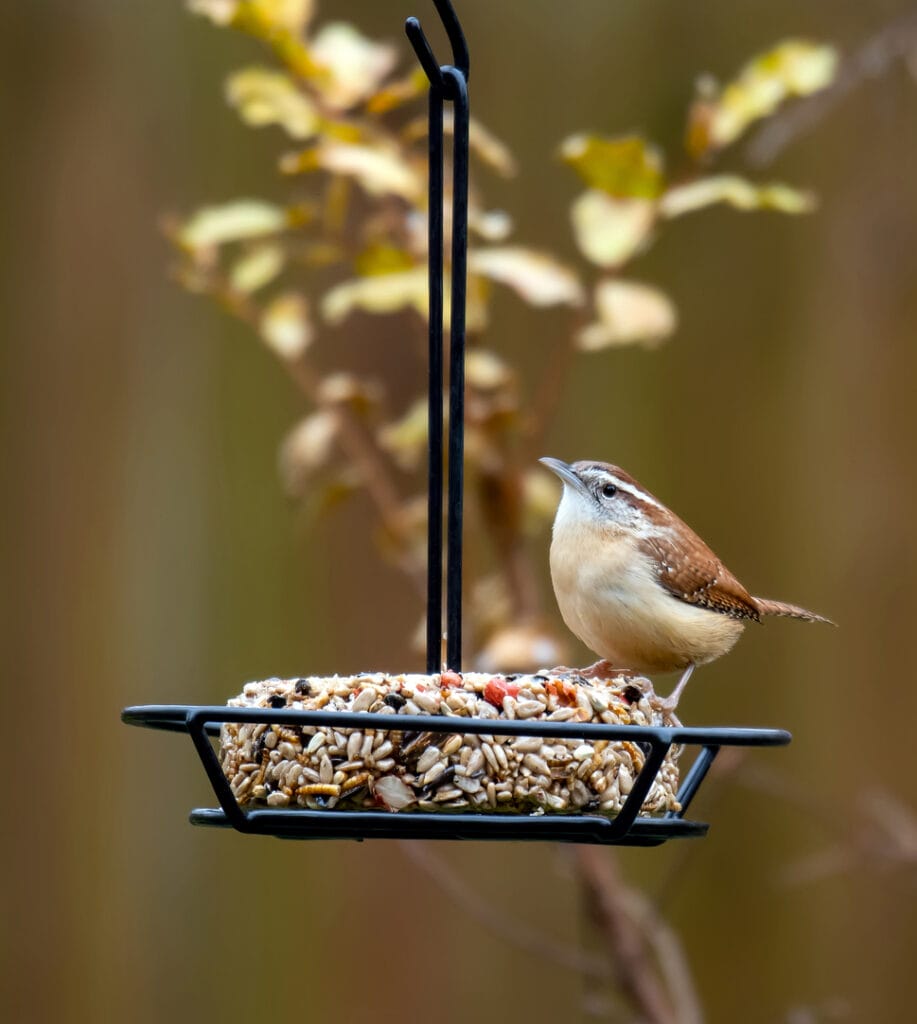
Carolina Wrens are not shy among humans and can live peacefully in human communities, as long as they can find quiet and hidden cavities and holes where they can build their nests.
Although these birds prefer natural cavities to build nests, abandoned human structures and objects can also represent a lucrative spot for building a nest for a breeding pair.
You can attract a pair of Carolina Wrens to your backyard by not getting rid of any broken branch or stump. If there’s a cavity that is located between 3 to 6 feet off the ground, a mating pair might consider it for building their nest.
If you think about building a birdhouse for Carolina Wrens, you need to build a functional birdhouse with a small entry hole or a guard to prevent the predators from entering the house. You can hang the birdhouse on a tree branch, at a height between 6 and 10 feet off the ground.
Author Note: One of the things that appeal to Carolina Wrens is to have a small porch or an entry ramp. You should make sure that the birdhouse’s door doesn’t face your door. Otherwise, you will scare the birds every time you leave the house.
You can also hang a tray bird feeder in your backyard and fill it with suet or peanut butter, especially in winter, to attract these small birds. Smearing amounts of peanut butter and suet over tree trunks will also attract Carolina Wrens to your backyard.
Wrap Up
Carolina Wrens sleep in corners because they prefer to hide. The birds usually face the corner and fluff their bodies to scare away predators by making themselves appear bigger than they actually are.
This behavior also prevents losing vital heat at night, as they tuck in their heads between their wings and use the feathers on the tail to cover the head.
This is why it’s quite common to see a roosting pair sleeping in a corner together as they can keep each other warm.
Although Carolina Wrens might not choose the exact same spot to sleep every night, they’re quite territorial. This means that they will probably sleep in the same area every night.
This will be very close to their feeding spot, and they will probably build a nest nearby.
Fly high friends!
FAQ
Wrens sleep in a variety of different places at night, depending on the species and the location. Some wrens will roost in tree cavities, nest boxes, or birdhouses, while others will roost in dense vegetation or in rock crevices. Some species of wrens, like the Winter Wren, are known to roost in dense underbrush or in the cavities of large trees, while the House Wrens often roosts in birdhouses or nest boxes, or in the cavities of trees, buildings or other human-made structures. Some wrens may also roost in dense vegetation, like shrubs or tall grasses.
There are several possibilities as to why a bird sleeps on your porch. One possibility is that the bird has found a safe and protected place to roost for the night. Birds need a safe place to sleep, away from predators, and if your porch provides that, the bird may choose to roost there. Another possibility is that the bird has found a food source nearby, such as bird feeders or a garden, and is using your porch as a convenient place to rest before and after foraging for food. Additionally, some birds may use porch as a temporary roosting spot while they are migrating, especially during bad weather.
Carolina Wrens are small, plump birds that are known for their bold and active behavior and loud, whistled songs. They are generally not considered to be aggressive birds, they are known for their territorial behavior during breeding season but it’s not directed towards humans or other animals.




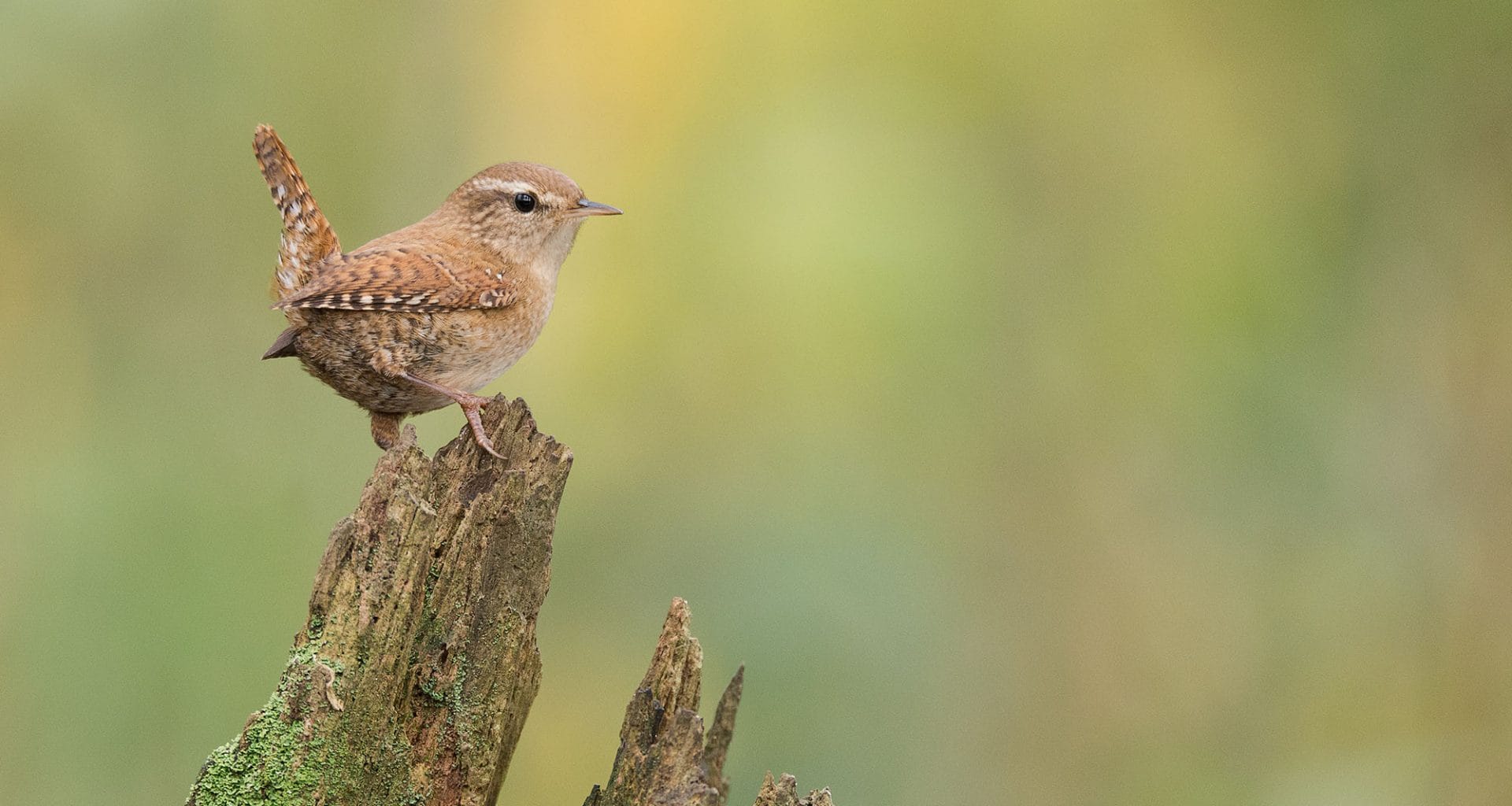
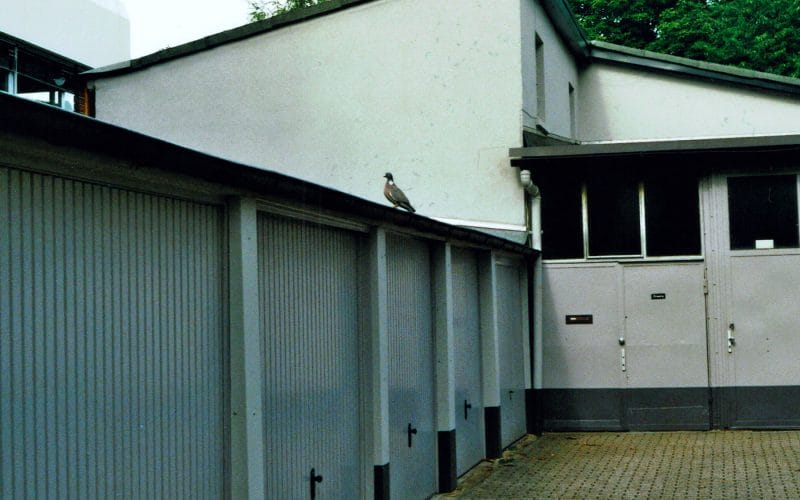

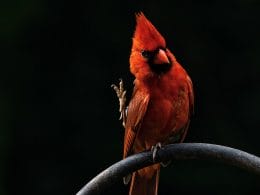


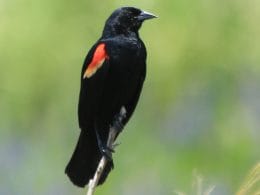
Thanks for the informative article. It is May and a pair of Carolina Wrens are sleeping inside one end of a rolled-up shade on my front porch. I am taking great pains not to disturb them. It is so cute that they are sleeping together.
The male flys to his sleep spot and chirps 4 times turning a direction with each chirp
I have these little nuggets sleeping in the corners of my covered porch regularly, on in particular that’s been there every night for a while – would it be beneficial or helpful for be to put some sort of cozy, nest-like materials in these spots for them? I love having them there, but idk if that would be a deterrent or simply unnecessary for whatever reason.